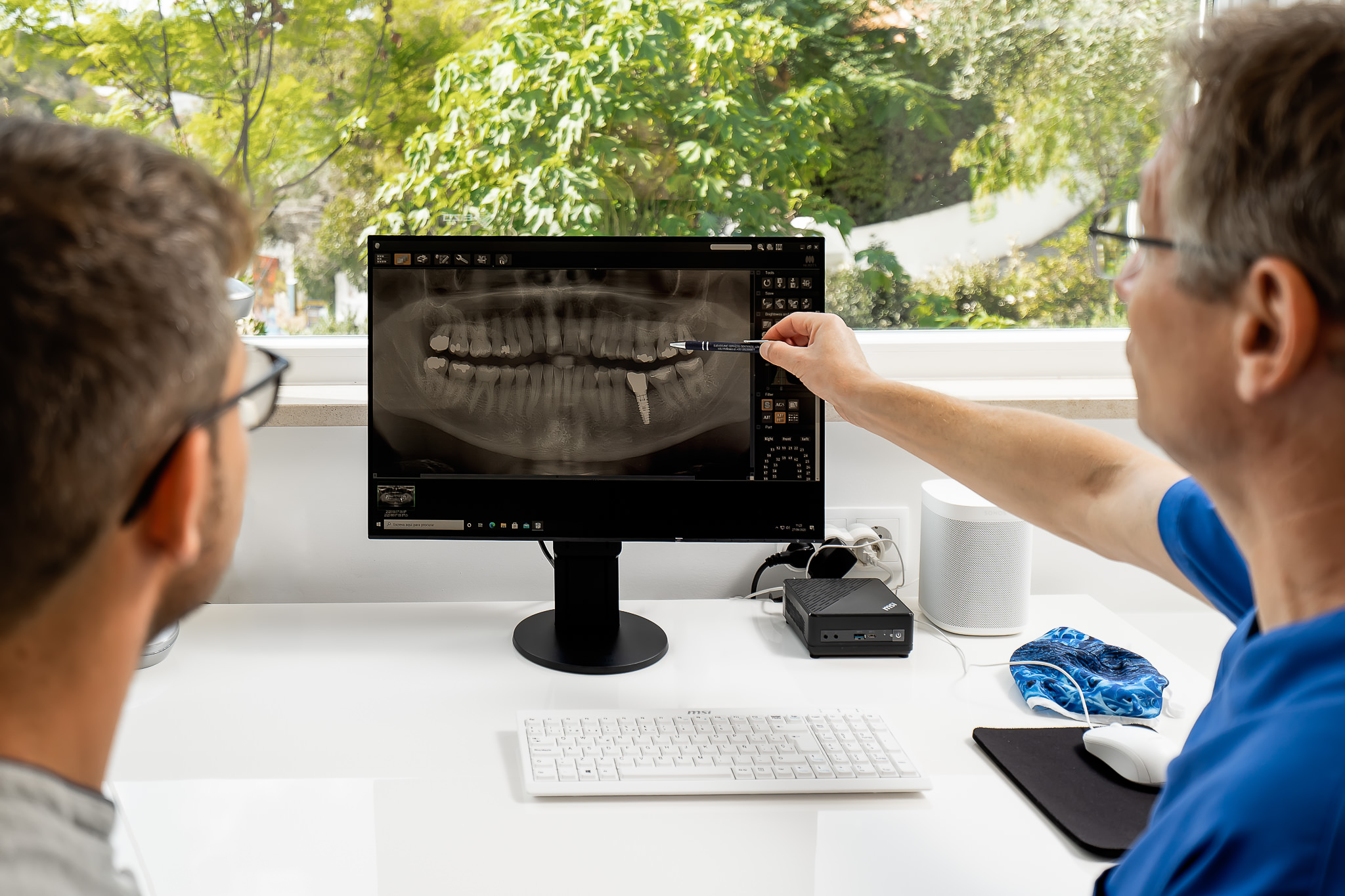If the preservation of a tooth was not possible, other teeth should not have to suffer in addition. An implant prevents the grinding of teeth and the sacrifice of natural tooth substance. Hygiene is as easy as with a natural tooth.
Material
Implants are at present screws made of titanium or ceramic, substituting a natural root that is missing.
As with any type of material, one implant type or brand does not equal the other. The differences are many and affect the shape, surface, quality of the material (eg purity of the titanium) as well as the quality, fit and precision of the components, the handling of the system for the practitioner and laboratory technician. However, availability and service are also crucial in choosing the system, as components might have to be available many years later. Our choice is European.

Procedure
The implant is placed into the jawbone under local anesthesia either directly after removal of the tooth or after the healing of the wound. The process is painless and usually barely perceptible. After a healing period, the implants are loaded with screwed or cemented crowns, usually made of ceramic, or more complex structures for prostheses.
Prognostic
For many years now, official studies and statistics have proven that success rates are as high as with any other type of dental treatment. The prerequisites are above all an experienced surgeon with a well-rehearsed team. Best material and a qualified dental technician will do the rest. In principle there is no "expiration date" for implants. A well positioned and maintained dental implant of the best manufacturer quality placed in stable biological conditions, can by far outlive you.
Indications
The most common implant is the single-tooth implant used for the replacement of a single tooth. In the absence of at least three teeth, a fixed bridge can be made on two implants.A toothless upper or lower jaw requires the insertion of four to eight implants for a fixed and at least two in the lower and four implants in the upper jaw for a removable solution.
All-teeth-on-4-implants method
This particular version of the implant bridge requires only 4 implants per edentulous jaw. We use them in cases where little bone supply would otherwise presuppose extensive and costly bone augmentation. By extracting the not saveable teeth, placing the dental implants and inserting the first screw retained and fixed denture in one flux, we reduce the required surgical sessions to a minimum of: one day!
After the healing time, only new impressions and registrations are taken to manufacture the final bridge.
The advantages are obvious:
- - only one surgical procedure
- - reduced implant number
- - significantly reduced total treatment time
- - significantly reduced costs
- - significantly reduced sessions
